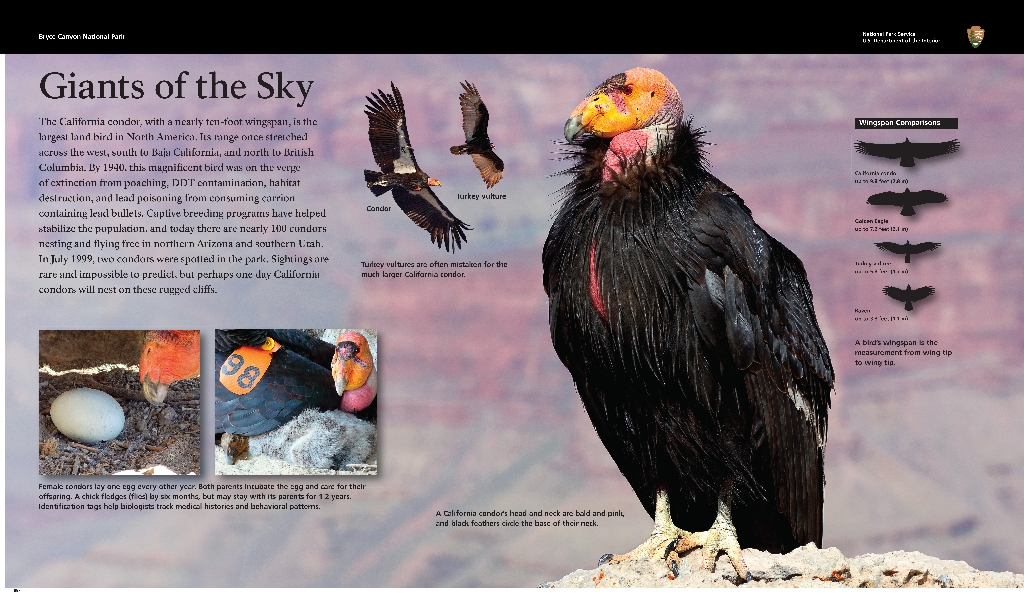
The California condor, with a nearly ten-foot wingspan, is the largest land bird in North America. Its range once stretched across the west, south to Baja California, and north to British Columbia. By 1940, this magnificent bird was on the verge of extinction from poaching, DDT contamination, habitat destruction, and lead poisoning from consuming carrion containing lead bullets. Captive breeding programs have helped stabilize the population, and today there are nearly 100 condors nesting and flying free in northern Arizona and southern Utah. In July 1999, two condors were spotted in the park. Sightings are rare and impossible to predict, but perhaps one day California condors will nest on these rugged cliffs.
Female condors lay one egg every other year. Both parents incubate the egg and care for their offspring. A chick fledges (flies) by six months, but may stay with its parents for 1-2 years. Identification tags help biologists track medical histories and behavioral patterns.
Female condors lay one egg every other year. Both parents incubate the egg and care for their offspring. A chick fledges (flies) by six months, but may stay with its parents for 1-2 years. Identification tags help biologists track medical histories and behavioral patterns.
Is there something we missed for this itinerary?
Itineraries across USA

Acadia

Arches National Park

Badlands

Big Bend

Biscayne

Black Canyon Of The Gunnison

Bryce Canyon

Canyonlands

Capitol Reef

Carlsbad Caverns

Channel Islands

Congaree

Crater Lake

Cuyahoga Valley

Death Valley

Dry Tortugas

Everglades

Gateway Arch

Glacier

Grand Canyon

Grand Teton

Great Basin

Great Smoky Mountains

Guadalupe Mountains

Haleakalā

Hawaiʻi Volcanoes

Hot Springs

Indiana Dunes

Isle Royale

Joshua Tree

Kenai Fjords

Kobuk Valley

Lassen Volcanic

Mammoth Cave

Mesa Verde

Mount Rainier

North Cascades

Olympic

Petrified Forest

Pinnacles

Rocky Mountain

Saguaro

Shenandoah

Theodore Roosevelt

Virgin Islands

Voyageurs

White Sands

Wind Cave

Yellowstone

Yosemite

Zion